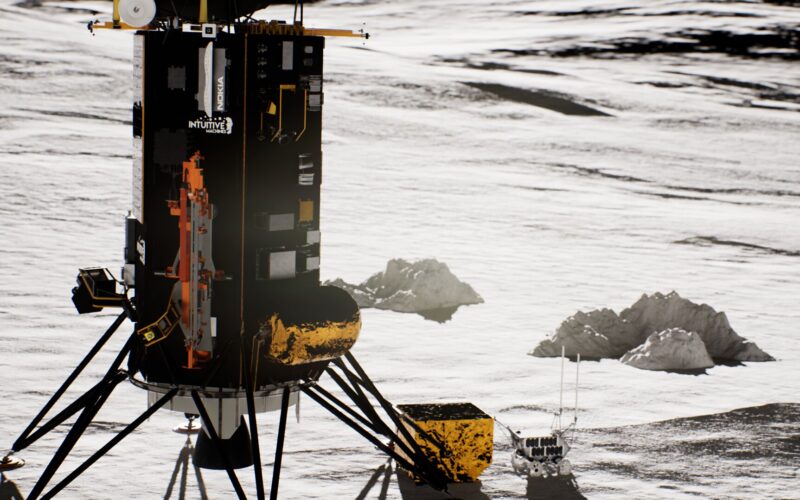Nokia announced that NASA has chosen it to be a part of the Tipping Point initiative, fostering the development of commercial space capabilities through industry-developed space technologies.
Nokia Bell Labs is to install the first-ever 4G/LTE cellular network on the Moon, thereby demonstrating that cellular technologies can provide the critical communications needed for future space missions.
To facilitate this endeavor, Nokia is teaming up with Intuitive Machines and Lunar Outpost for an uncrewed lunar mission, IM-2, to deploy the cellular network to the lunar surface.
The lunar network proposed by Nokia includes a base station unit, designed to be integrated directly into the Intuitive Machines’ spacecraft Nova-C lander to act as the cell site for 4G/LTE.
Additionally, the radio equipment will be installed on two lunar vehicles: the Mobile Autonomous Prospecting Platform (MAPP) rover from Lunar Outpost and the Micro-Nova hopper from Intuitive Machines.
These radio components should collectively form a network to enable connection between the vehicles and the lander.
In a statement on July 25, 2023, Thierry Klein, President of Bell Labs Solutions Research at Nokia, said: “Like shelter, food, and life support, communications will be a crucial component of any future lunar or Mars mission.”
“Instead of ‘reinventing the wheel’ by creating a proprietary network in space, we are taking advantage of the same state-of-the-art technologies that connect billions of smartphones on Earth,” he added.
Nokia Bell Labs has a long-established background in space technology, dating back to 1962 when the company participated in the launch of one of the first communication satellites, Telstar 1.
Furthermore, the Nokia lab also provided technical support for all US manned space programs from Mercury to Apollo.
Nokia’s IM-2 mission is scheduled to launch within a three-month timeframe, starting in November 2023.

